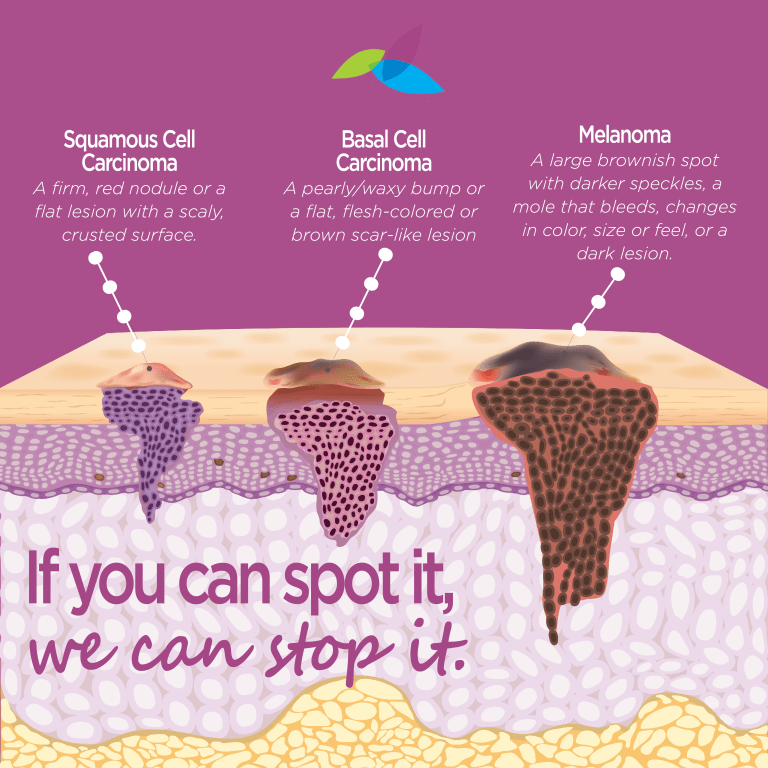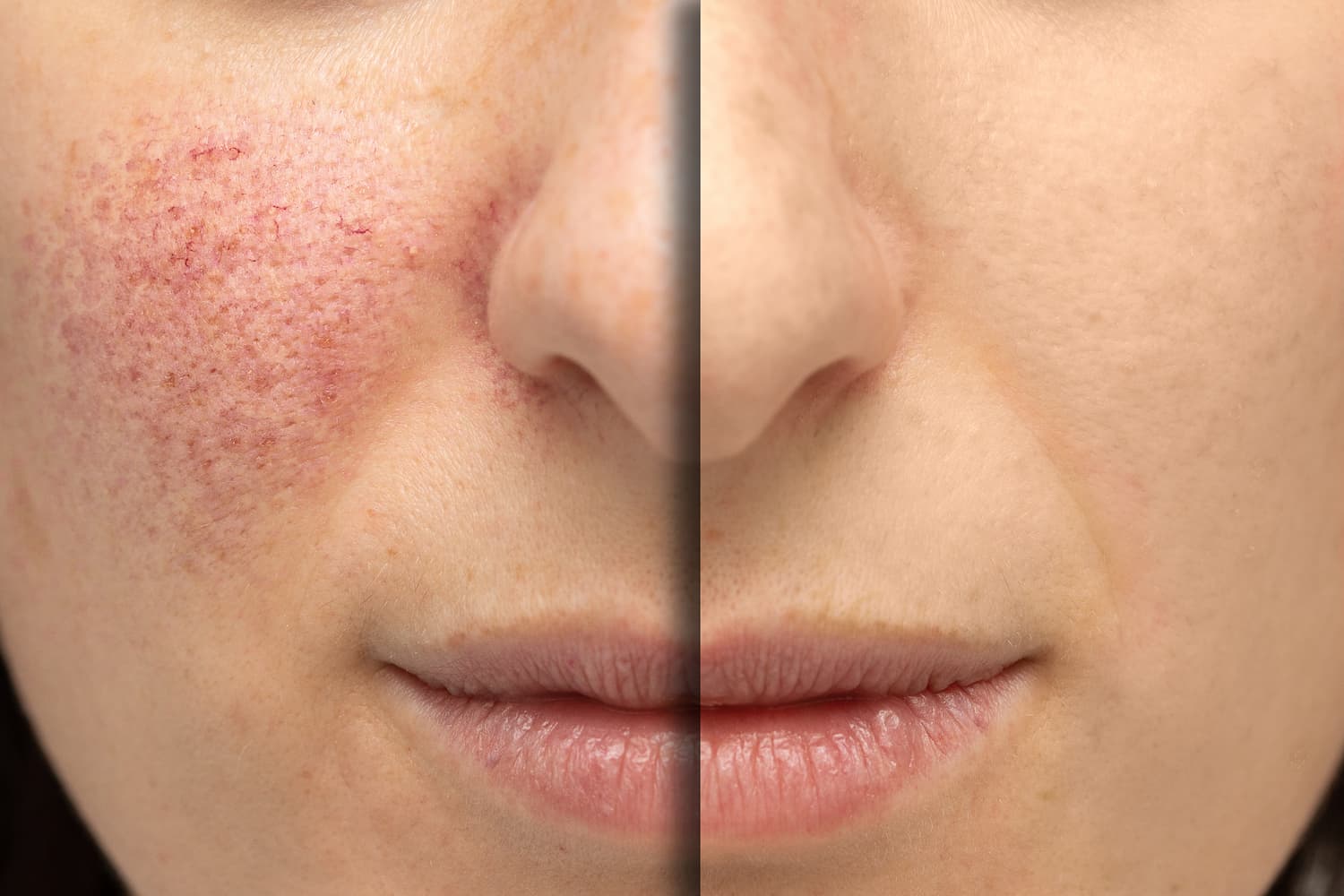Skin cancer symptoms are most commonly associated with moles on the skin—but how can you tell if your mole is cancerous? A simple test that you can do at home might just save your life!
How to Perform a Skin Exam at Home
Skin cancer is the most common cancer diagnosis of all cancers, and it’s also the most preventable cancer. Most skin cancer is caused by damage from the sun’s UV rays (ultraviolet radiation) and falls under two main categories: melanoma and non-melanoma skin cancer.
You should be conducting a self-exam for your skin at least every month to document the moles on your body so that you can easily detect changes or causes for concern. Spots can grow rapidly, so if you see something unusual contact your dermatologist because skin cancer symptoms are not always easy to identify on your own.
Examine Your Skin Closely
Examine your skin with a mirror or ask someone to help you. Pay special attention to areas of the skin that are often exposed to the sun, such as the hands, arms, chest, neck, face, ears, legs, and back.

If a mole does not change over time, there is little reason for concern. If you see any signs of change in an existing mole, if you have a new mole, or if you want a mole to be removed for cosmetic reasons, talk to your dermatologist.
Check Your Moles
The most common sign of non-melanoma skin cancer is an abnormal change to an area of your skin, such as a small red lump. But with melanoma, a change in the appearance of a mole can be an indicator.
Moles are clusters of cells that produce a pigment in your skin and it’s normal to have them. But keep an eye out for any change to the appearance of an existing mole and monitor your skin regularly to see if any more develop. If a mole does not change over time, there is little reason for concern.
If you see any signs of change in an existing mole, if you have a new mole, or if you want a mole to be removed for cosmetic reasons, talk to your dermatologist.
The ABCDEs of Skin Cancer
There is a simple rule you can follow at home which can help you identify if a mole is cancerous. The rule is known as the ABCDEs of Skin Cancer:
- Asymmetry – one half does not match the other
- Borders – the outer edges are uneven
- Color – change in color, dark black, multiple colors or a mole that is a different color in one part than in another
- Diameter – any increase in size, but particularly more than about 6mm (size of a pencil eraser)
- Evolving – change in size, shape or color as well as a change in elevation of the surface or irregularly raised

How to Look for Basal Cell and Squamous Cell Carcinomas
Basal cell carcinomas and squamous cell carcinomas are two types of non-melanoma skin cancer and each type has three symptoms.

Basal cell carcinomas may look like small lumps or ulcers with a pearly appearance, often with small blood vessels around them, a scaly, red plaque (bumpy patch of skin), and a waxy, shiny area of skin, that looks a bit like a scar.
Squamous cell carcinoma may look like a lump with scaling or crusting skin on top, a small, red lump which quickly gets bigger, and an area of skin that doesn’t heal but is usually a bit raised. Overexposure to ultraviolet light is the main cause of non-melanoma skin cancer. UV light comes from the sun, as well as from artificial sunbeams or sunlamps. UV exposure is the main preventable cause of skin cancer, and wearing sunscreen is one of the best ways of staying safe in the sun.
What About Skin Tags?
Another thing to look for is skin tags. A tip from Dr. Dustin Mullens who is currently a dermatologist with Affiliated Dermatology spoke on this issue.
“A skin tag is a small flap of tissue that hangs off the skin by a connecting stalk. Skin tags are not dangerous. They are usually found on the neck, chest, back, armpits, under the breasts, or in the groin area. Skin tags appear most often in women, especially with weight gain, and in elderly people. Skin tags usually don’t cause any pain. However, they can become irritated if anything, such as clothing, jewelry, or skin rubs against them.”
He adds, “Your dermatologist can remove a skin tag by cutting it off with a scalpel or scissors, with cryosurgery (freezing it off), or with electrosurgery (burning it off with an electric current).”
You should always have an annual skin screening on your calendar, and if you don’t you should make an appointment now! When it comes to skin cancer, it is better to be safe than sorry. Leave it to the specialists to analyze abnormal spots, as the average person struggles to tell if a skin blemish is cancerous. If you do notice any changes, or if any moles itch or become red, you should visit our dermatologists in Phoenix, AZ, and Scottsdale, AZ.
Contact us today for an appointment!






